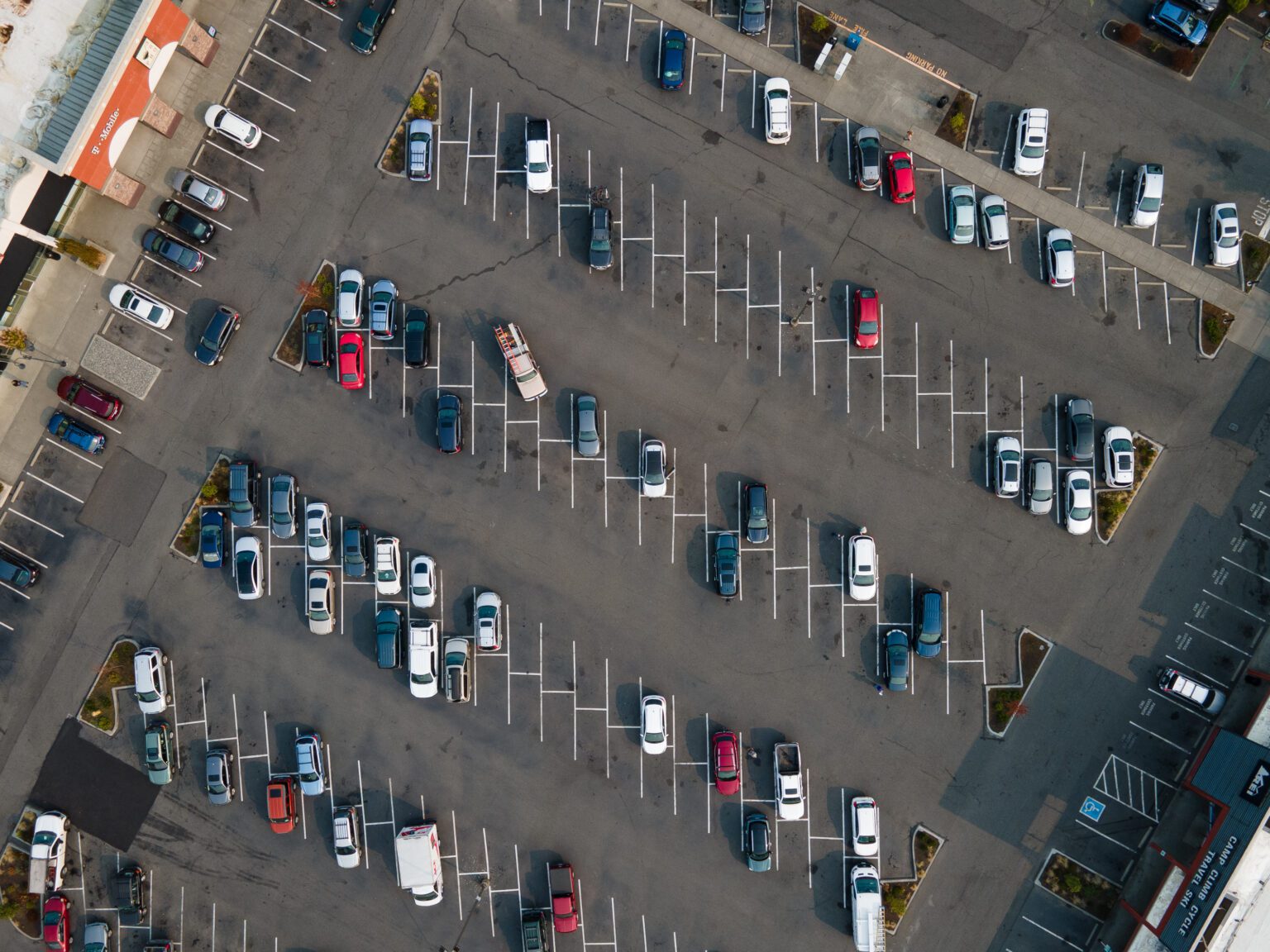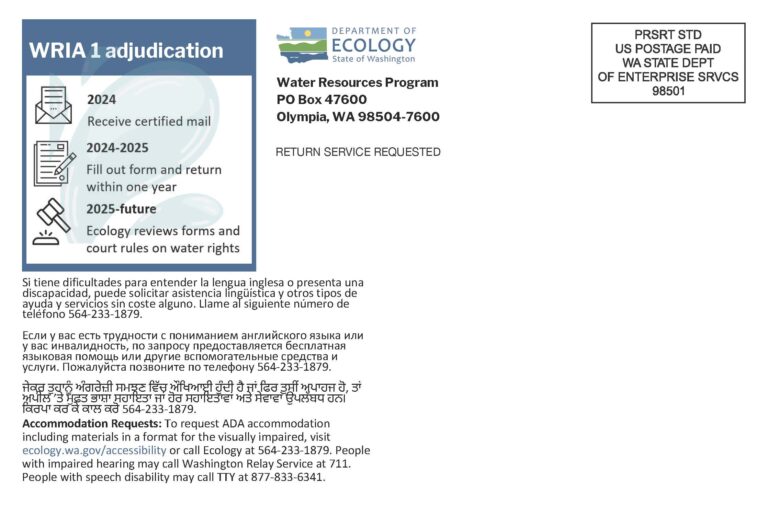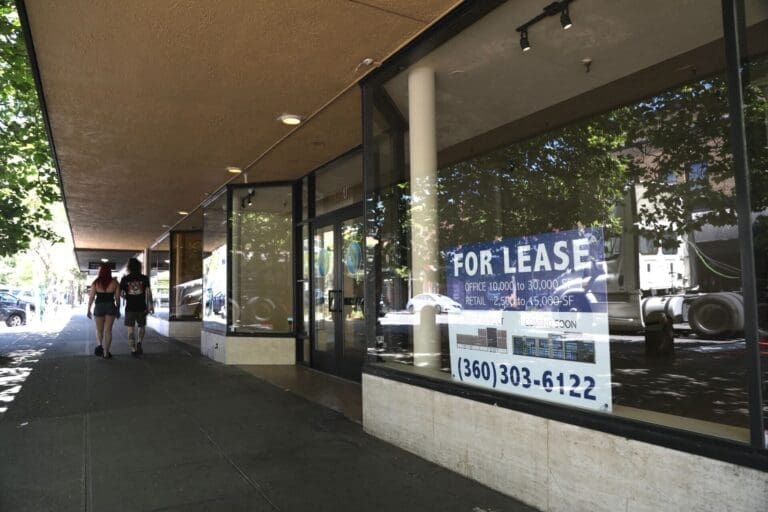An audience of concerned cyclists, pedestrian-enthusiasts and urban planners gathered recently to learn about possible solutions to an urban planning dilemma: parking.
Parking, a regulated, mandated and sprawling feature of apartment buildings, downtown shopping centers and grocery stores, is also strangely invisible. It takes up whole lots, towering above or burying below us in parking garages. But the sheer cost of parking, from construction costs to the parking fees that pays for it, make other developments, like housing, come with a higher price tag. Now, some people are challenging the parking status quo.
Parking took up 5.5% of all urban land in the country in 2012, according to the United States Geological Survey. That area, equivalent to nearly 5,500 square miles, would fill in most of Whatcom and Skagit counties combined.
Tony Jordan, president of The Parking Reform Network, outlined how parking development requirements are contributing to worsening traffic, limited housing development, increased environmental impacts and large-scale sprawl in cities across the country.
The Parking Reform Network, a Portland-based nonprofit, works with communities and cities around the world to educate the public about how parking policy impacts equity, affordable housing, climate change and traffic.
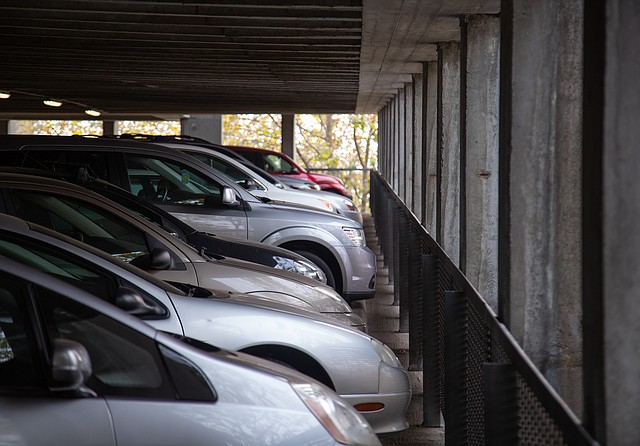 Cars fill an aisle of the Commercial Street Garage. (Hailey Hoffman/Cascadia Daily News)
Cars fill an aisle of the Commercial Street Garage. (Hailey Hoffman/Cascadia Daily News)
The cost to park
When Jordan looks at a parking space, he sees more than a piece of pavement with purpose; he sees a glaring waste of money and resources.
“I see a parking space and it looks like, maybe alternately, a pile of burning cash,” Jordan said. “When you understand the cost of [parking] and the space it takes up and the impact it has, it’s really hard” to see it differently.
A standard parking space in a ground-level lot generally costs thousands of dollars when land and construction costs are taken into account, according to research by Donald Schoup, a professor in the Department of Urban Planning at UCLA and author of the 2005 book, “The High Cost of Free Parking.”
A single space in an above-ground parking structure can cost upwards of $40,000, and spaces in below-ground structures can more than double that.
The RJ Group, a development company based in Bellingham, estimates a single parking spot in one of the above-ground structures in Whatcom County costs $45,000, according to the Whatcom Housing Alliance’s report on parking policy.
For housing development, and associated parking requirements that come along with it, any $10,000 construction expense leads to an additional $100 in rent, according to the Parking Reform Network.
Parking limitations
In Bellingham, parking mandates exist for different developments, including single family homes, multi-unit rentals, hospitals, restaurants, libraries, office buildings and bowling lanes. An ordinance in 2014, however, allows the Bellingham Public Works director to waive those parking requirements if there is not enough space to accommodate them, if transportation services are nearby or if the developer plans to provide robust pedestrian and cyclist infrastructure, according to the city.
If housing can only be developed if it meets a set number of off-street parking spots, and that space isn’t available, housing will not be developed at all, said Rose Lathrop, program director at Sustainable Connections and interim executive director at Whatcom Housing Alliance.
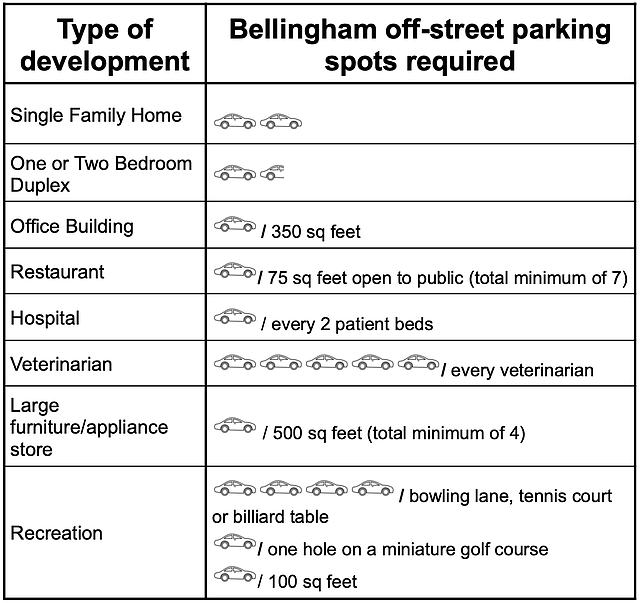 The city of Bellingham requires off-street parking spots depending on the type of development. Source: City of Bellingham (Olivia Hobson/Cascadia Daily News)
The city of Bellingham requires off-street parking spots depending on the type of development. Source: City of Bellingham (Olivia Hobson/Cascadia Daily News)
“Really what we need is more housing supply,” Lathrop said. “[Whatcom Housing Alliance] believes that instead of building parking for cars, we should be building homes for people.”
Parking reform doesn’t necessarily mean taking parking away, but instead limiting the amount of parking required for new development, Jordan said.
“There’s always going to be parking for people who want to have a car,” Jordan said.
Paid parking returns
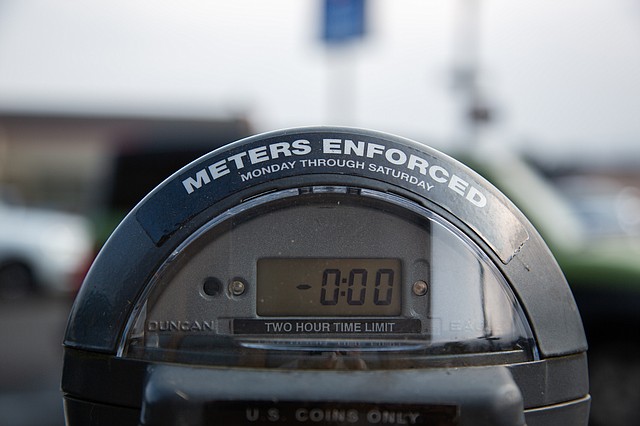 New parking enforcement officers began work on Sept. 16. (Hailey Hoffman/Cascadia Daily News)
New parking enforcement officers began work on Sept. 16. (Hailey Hoffman/Cascadia Daily News)
Paid parking in Bellingham generates $2.2 million annually, according to the city. Most of that revenue goes to operating costs, while some goes to downtown improvement projects and business support.
Adjusting pricing to reflect demand is an important feature of supporting businesses in urban centers and increasing customer accessibility, said Eric Johnston, Bellingham Public Works director.
“Charging the right price at the right time is essential for managing parking demand; it increases parking turnover creating easier access for customers, and it also helps to incentivize alternative transportation options such as walking, bussing, biking, or other types of rolling,” Johnston said in an email.
“In early 2023, we will implement progressive parking rates in downtown and Fairhaven to allow for longer periods of on-street parking with an increased cost per hour for longer stays,” he continued.
City Council votes to remove parking
Bellingham City Council voted unanimously on Oct. 24 to remove public parking along five streets (West Illinois, Meridian, Girard, Cornwall and Eldridge) to allow for bike lanes — a project that initially began in the 2014 Bellingham Bicycle Master Plan.
Earlier this month, a public comment period on the issue lasted nearly an hour and a half, with many residents expressing concerns about Eldridge, where parking would be removed from both sides of the street rather than just one.
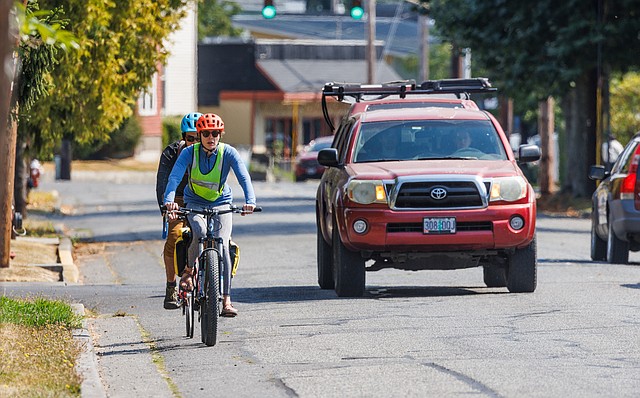 Two riders pedal in a single file line with traffic along Eldridge Avenue on Sept. 3. (Andy Bronson/Cascadia Daily News)
Two riders pedal in a single file line with traffic along Eldridge Avenue on Sept. 3. (Andy Bronson/Cascadia Daily News)
Some commenters were worried adding bike lanes will remove parking for visitors, mail delivery and trash pickup. Todd Lagestee, a Bellingham resident, voiced frustration with the city for taking away public parking.
“I absolutely support making safer bikeways,” Lagestee said, “[but] there is no magic wand that just makes cars go away.”
Waiving parking requirements for residential developers was not making housing more affordable because taking out parking construction mandates alone doesn’t require developers to make their housing affordable, Lagestee said.
“If the city is going to give an allowance for less parking, then they need to require affordability,” he said.
A nationwide trend
Parking reform in the U.S. is building momentum, and cities and states across the country are starting to reassess how parking is incorporated into new development. In September, California Gov. Gavin Newsom signed a bill banning local governments from requiring most new development located next to transit services to have mandated parking.
In Oregon, 61 cities will eliminate parking mandates near high frequency transit services by 2023, according to the Parking Reform Network.
To Jordan, more parking results in more traffic because there is room to park more cars. More traffic leads to the desire for larger roads, slower public transit systems and less safe cyclist and pedestrian commuter routes, leading to more sprawling developments further away from downtown urban centers.
That sprawl leads to more car dependency and increased driving, which leads to the need for more parking. The cycle is brutal, Jordan said.
“If your traffic in your city center is already bad, adding more parking will absolutely never make it better. It’s only going to make it worse,” Jordan said.

